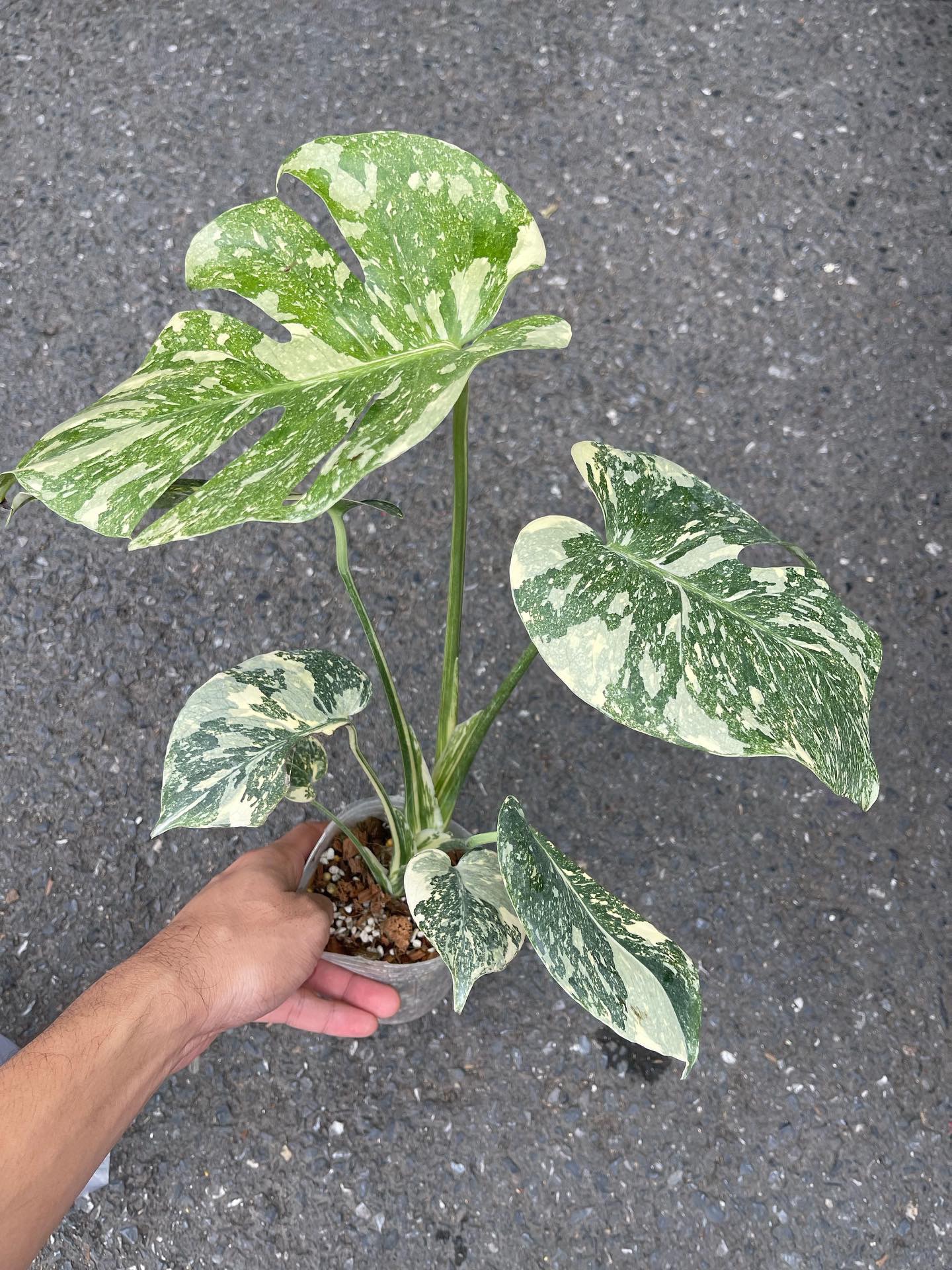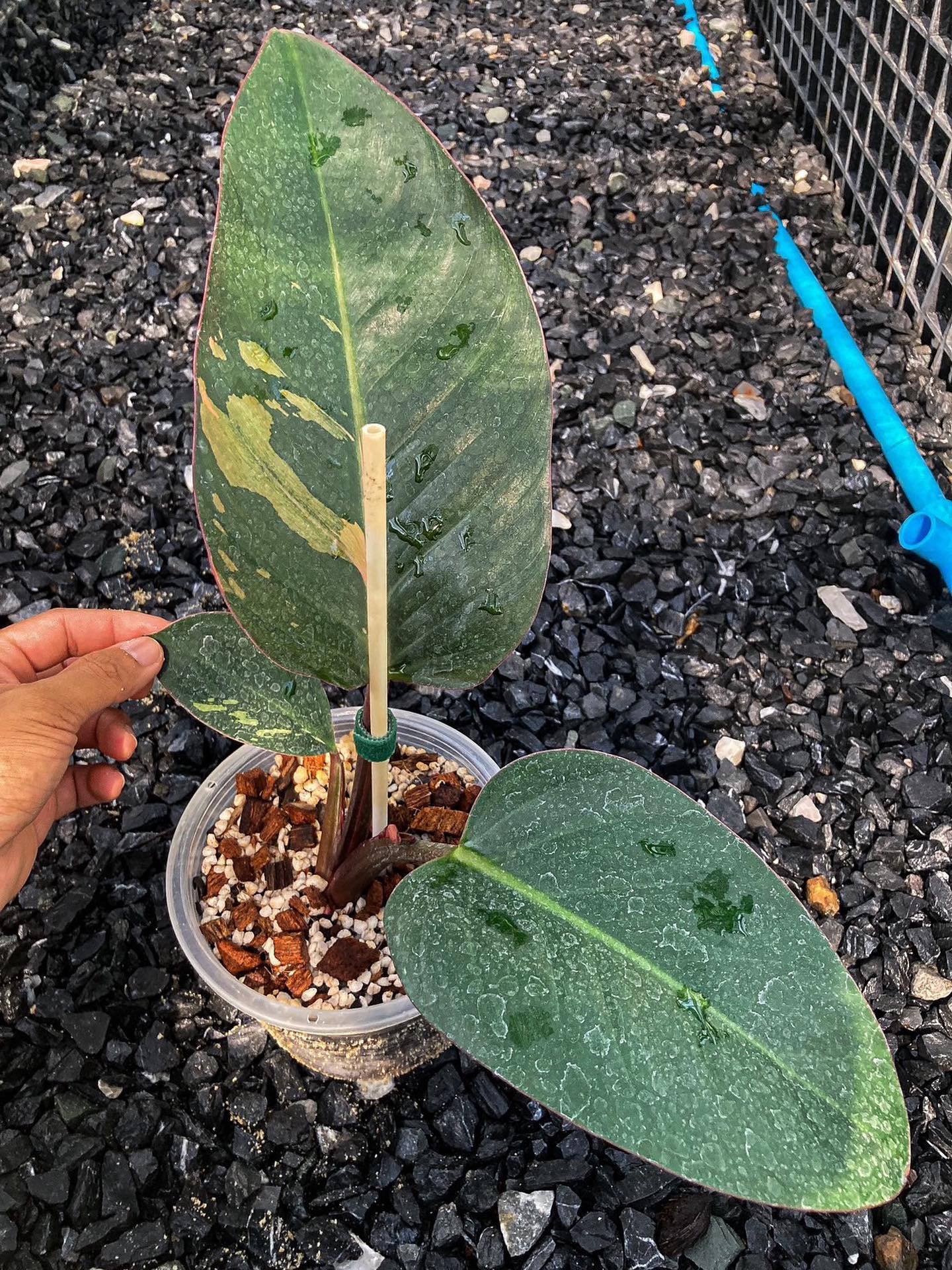Plant variegation refers to the occurrence of differently colored areas on plant leaves and sometimes stems. It is a common phenomenon in many species of plants. Variegation can manifest in different patterns, usually involving greens and whites, yellows, or pinks. There are several causes behind variegation and it can have implications for plant health and care.

Types of variegation patterns
Sectorial variegation
Sectorial variegation occurs when a section of the leaf, from the edge inwards, loses its green pigment. This results in white or pale yellow strips radiating from the leaf edge towards the midrib or base of the leaf. Sometimes only half the leaf will be affected. Sectorial variegation can spread gradually as the plant grows. It is often caused by viral infections.
Sectorial variegation can occur in numerous plant species, including certain begonias, coleus, hibiscus, and tulips. An affected plant may continue living but it tends to lose some vigor over time as photosynthesis becomes impaired from the lack of chlorophyll. Proper care is important to keep the plant healthy.
Viral infections
Many plant viruses can cause sectorial variegation symptoms to appear. The virus impairs chlorophyll production which leaves distinct pale sections on parts of the leaf. Variegation from a virus tends to get more pronounced over time. The plant loses capacity to photosynthesize and make food.
Managing virally variegated plants
If a plant develops a viral infection, the variegated leaves should be pruned to prevent the virus spreading further. Keep the plant isolated from other plants. Control insect pests that can transmit viruses. Apply fertilizer to help the plant maintain vigor. Propagate healthy cuttings if possible to salvage some non-infected plants before the parent plant dies.
Chimeric variegation
Chimeric variegation occurs when there is a genetic mutation within the meristem tissue of the plant, allowing different cell lines to develop. This can result in distinctly different sectioned patterns on leaves, such as center portions being one color and the edges another color.
Pink edges on otherwise green leaves are a common form of chimeric variegation. The pigments develop from the same genetic mutation so once they appear, the variegation remains stable. The plant is healthy and the trait can be reproduced true-to-type through cuttings.
Causes of chimeric variegation
Chimeric variegations originate from random genetic mutations. These happen naturally at low frequencies, but can also be induced through exposing plants or seed to radiation or chemicals. This “sports hunting” is used to intentionally develop ornamental plants with novel leaf patterns.
Propagating chimeric variegation
Plants with chimeric variegation can be propagated reliably from cuttings, division or grafts. The mutated tissue will continue generating the mixed pigments indefinitely. Examples include variegated Schefflera, Croton, Pothos, and Coleus which have been maintained and spread as desirable houseplants. Controlling conditions carefully is important when propagating chimeric plants to avoid reversion.

List of the most sought after Rare Variegated Plants in 2023
Causes of variegation
There are several contributing factors that can cause the variegated appearances described above. These include viruses, genetics, environment, nutrients, and phytoplasmas.
Viruses
Some plant viruses interfere with chlorophyll production which creates pale splotches on leaves where the virus has infected the tissue. Variegation from viruses tends to worsen until the plant declines. Examples include Tulip breaking virus and Abutilon mosaic virus. Careful control of vectors like insects and tools can limit spread.
Genetics
Random genetic mutations can lead to chimeric variegation resulting in multi-colored leaves. Propagating from the variegated tissue clones the mutation. Intentionally inducing mutations using chemicals or radiation can generate new variegated varieties for ornamental horticulture.
Environment
Stressors like poor light, low temperatures, compacted roots, or drought can sometimes disrupt production of chlorophyll and carotenoids. New foliage may emerge with bleached sections. Correcting growing conditions often resolves temporary variegation.
Nutrients
Deficiencies in nutrients like nitrogen, magnesium, iron, manganese, and zinc can inhibit leaf pigment development in some species. Foliar analysis and soil tests help diagnose deficiencies. Applying lacking nutrients to the soil or plant leaves can help remedy nutritional variegation.
Phytoplasmas
Phytoplasmas are specialized bacteria that can infect the phloem and interfere with plant processes like nutrient transport. Infection shows up in leaves as yellow and purple pigments accumulating. Controlling insect vectors provides some protection against phytoplasma spread to other plants.

Impacts on plants
Variegation can be harmless or problematic depending on the cause and plant type. Beautiful variegated plants are prized in horticulture. On the other hand, nutritional deficiencies and viruses signal underlying issues that require intervention.
Aesthetic value
Plants with chimeric variegation are highly popular for ornamental use thanks to their beautifully colored and patterned leaves. The value lies strictly in the appearance rather than health. Stable variegation is reliably passed to new clones. Examples include variegated angel wing begonias, crotons, and snake plants.
Reduced photosynthesis
Loss of green pigment almost always compromises the leaf’s ability to photosynthesize at full capacity. While cells still absorb light energy, less food is produced. Heavily variegated plants grow slower and are lower yielding. Providing excellent care helps compensate.
Susceptibility
Variegated plants tend to be more vulnerable to pest and disease problems. Weakened from their inherent challenges photosynthesizing, the added stresses can quicken decline. Care strategies emphasize boosting resilience with steady humidity, nutrition and preventative treatments.
Spread of disease
Some variegations signal the presence of infectious pathogens like viruses and phytoplasmas. These organisms can continue spreading to infect additional plants if vectors like tools and insects aren???t properly controlled. Isolating or removing infected plants helps limit propagation.
Conclusion
The variegated patches, stripes and patterns seen on the leaves and stems of some plants have several possible underlying causes. Variegation can stem from viruses, genetics, environment, nutrition, or phytoplasmas. These different factors influence variegation???s impacts ranging from fatal disease to beautiful ornamental qualities. By understanding the distinct types and causes behind plant variegation, Growers can properly respond to manage health.
FAQ
- What is plant variegation?
- Plant variegation refers to the presence of two or more colors or shades in the leaves or other plant parts, creating a unique and often visually striking appearance. This phenomenon is caused by genetic mutations that affect pigmentation in plants.
- How does plant variegation occur?
- Plant variegation occurs due to genetic mutations that disrupt the normal production of chlorophyll, the green pigment responsible for photosynthesis. As a result, areas of the plant may lack chlorophyll, causing the characteristic color patterns.
- Are variegated plants common in nature?
- Variegation is relatively rare in nature, as it is usually the result of genetic mutations. However, some variegated plants have become popular in horticulture and are cultivated for their unique appearance.
- Are variegated plants less healthy than non-variegated ones?
- Variegated plants can be less vigorous than their non-variegated counterparts because they have reduced chlorophyll content. This can make them more sensitive to environmental stress, requiring special care to thrive.
- Can I propagate variegated plants?
- Yes, many variegated plants can be propagated through methods like stem cuttings or division. Keep in mind that the new plants may not always exhibit the same variegation patterns as the parent plant, so it’s essential to understand the specific propagation requirements for each species.
See more Variegate Your Plants: Master Guide to Stunning Foliage!

